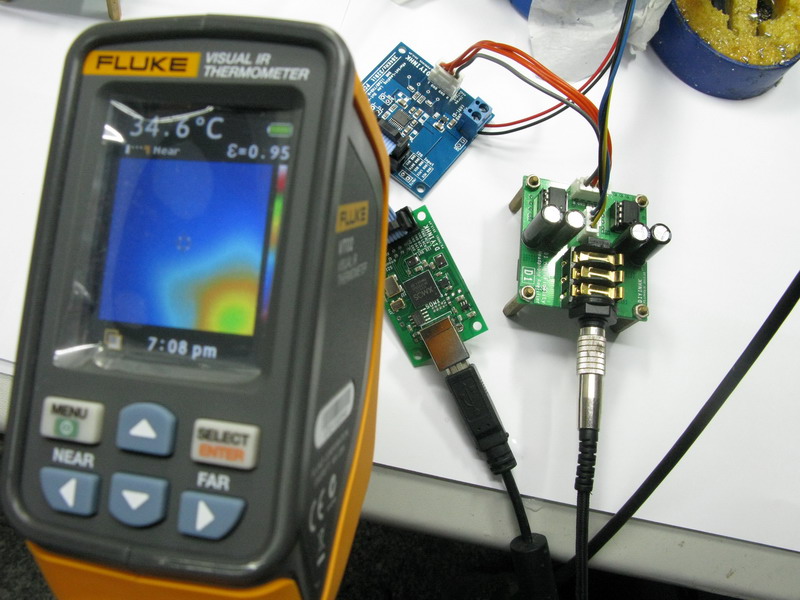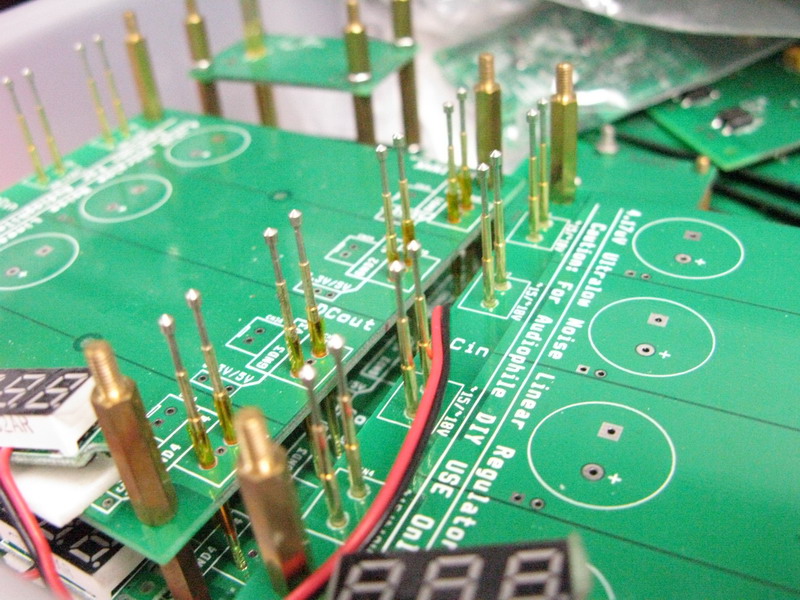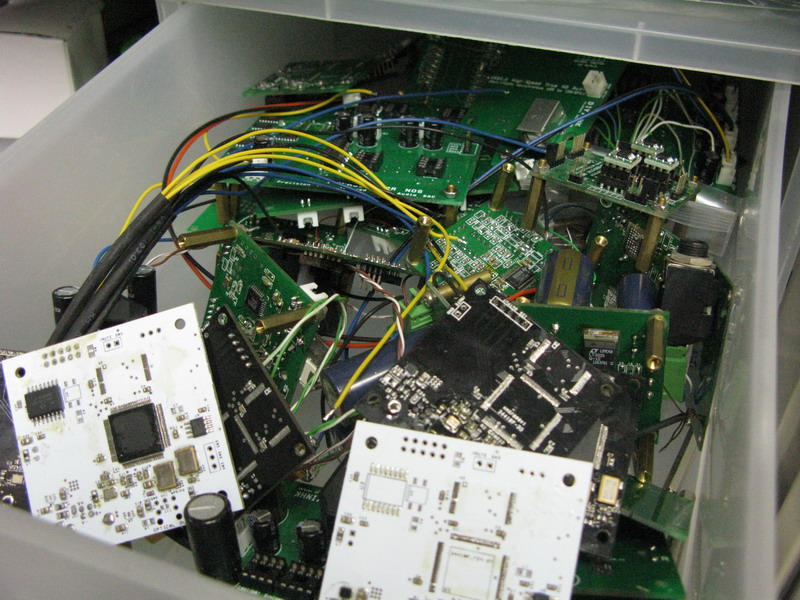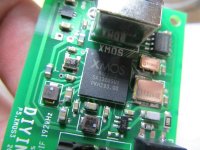Seems that there is a new version of this with SPDIF output available @ XMOS 192kHz high-quality USB to SPDIF with ultralow noise 6.5uV regulator
Looks like a perfect match for "Subbu DAC V3 - ES9023/WM8804 SPDIF & Power Supply PCB" Group Buy
8!CTpKg~~60_57.JPG)
8!EUSeQ~~60_57.JPG)
Looks like a perfect match for "Subbu DAC V3 - ES9023/WM8804 SPDIF & Power Supply PCB" Group Buy
Seems that there is a new version of this with SPDIF output available @ XMOS 192kHz high-quality USB to SPDIF with ultralow noise 6.5uV regulator
Anybody figure out which XMOS chip is being used in this? It uses the same driver package as the DXIO.
The same as with i2s output - just using different pin and output logic. Most probably a combo should be doable with the same chip.
I figured it was the same chip as the DXIO but apparently still unidentified as to which from the new series. I have one of these new DIYINHK XMOS with S/PDIF on the way as well as a Breeze Audio box with a CM6631A with intent to do a head to head in my audiophile system. I'm trying to establish which XMOS chip specifically for reference if/when I post the experience (probably at HF). These USB-S/PDIF boxes will also be compared to an older EA Off Ramp 3 (top tier adaptive USB to S/PDIF from a few years ago). I emailed DIYINHK asking which chip and he did not reply.
DXIO new 1.67 version driver is available at
DIYINHK DXIO USB Audio Driver v1.67 - DIYINHK
Happy diying to all!
DIYINHK DXIO USB Audio Driver v1.67 - DIYINHK
Happy diying to all!
DXIO new 1.67 version driver is available at
DIYINHK DXIO USB Audio Driver v1.67 - DIYINHK
Happy diying to all!
Howto download ?
Howto download ?
Yes, noticed the same problem - could you post directly to the forum for us?
simply add to cart and press next next finish and download, it's free and do not need to enter any credit card information.
actually, xmos/thesycon require licence fee on each driver copy used, but there are some user uses mac and linux do not need the driver.
we are thinking of a cheaper version without driver bundled.
The new xmos chip is hot!
Digikey is sold out and the next arrived time is 9-17,
I still have few only, may be out of stock again...
Any suggestion for the next version are welcome.
I am planning a more cheaper version with shenzhen oscillator and an expensive version with ndk nz2520sd oscillator
Digikey is sold out and the next arrived time is 9-17,
I still have few only, may be out of stock again...
Any suggestion for the next version are welcome.
I am planning a more cheaper version with shenzhen oscillator and an expensive version with ndk nz2520sd oscillator
Thank you for the suggestion.
I am lucky to have experience of PCB manufacturing during my university study life. Via is one of the hardest part in PCB manufacturing. The copper thickness in the via is always unstable, i.e. the resistance and the inductance in the via is unpredictable. In real life, decoupling cap under the PCB is good for theory, but always make things worst.
I am lucky to have experience of PCB manufacturing during my university study life. Via is one of the hardest part in PCB manufacturing. The copper thickness in the via is always unstable, i.e. the resistance and the inductance in the via is unpredictable. In real life, decoupling cap under the PCB is good for theory, but always make things worst.
"with ndk nz2520sd oscillator"
Would like to see
1) the more shortly I2S Trace and left side (when look from the USB side)
2) the Decoupling cap under the PCB
3) others modification for SQ (Up to your Idea)
And the AKM4399+AK4113 on same PCB
Thanks and best regards
Thermal analysis of the XMOS PCB
(Thermal analysis is always the last line to diagnosis fault in the design, if the temperature is abnormal in any part of the PCB)

QC Test fixtare with many gold pin

full box of cost prototype in developing stage before the final (there are many prototype already go to the rubbish bin, not environmental friendly, I hope much less )
)

I don't know others, but is it too serious for only dozens final
(Thermal analysis is always the last line to diagnosis fault in the design, if the temperature is abnormal in any part of the PCB)
QC Test fixtare with many gold pin
full box of cost prototype in developing stage before the final (there are many prototype already go to the rubbish bin, not environmental friendly, I hope much less
I don't know others, but is it too serious for only dozens final
Yours is usually fun posts to see, DIY in HK. Thermal check is very good to be thorough and adds to the trust of your devices. Did you deal okay with the big storm passing by?
Noticed your CM6631A board is new to be used today. Here's a friendly tip for you I discovered by trying it just for fun and expecting it to not work. Try an ADuM4160 USB isolation board designed for audio purposes with on board clean audio grade power design passing to supply the CM6631A by USB connection. (I am using a DIY Paradise Ultravox ADuM4160 with a linear regulator on board.) Many think it does not work on modern USB conversion chips, typically XMOS it does not. Amazingly works on the CM6631A with expected USB 1.1 limits and makes a remarkable difference on performance. Be sure to remember who tipped you!
I have your XMOS USB convert to S/PDIF device and a similar Weiliang CM6631A converter device. By my experience I find the CM6631A on the AD isolation has much better stereo image performance over the CM6631A and your XMOS devices alone.
If you experience similar performance it will be very interesting to see your analysis and what you see on test equipment.
Noticed your CM6631A board is new to be used today. Here's a friendly tip for you I discovered by trying it just for fun and expecting it to not work. Try an ADuM4160 USB isolation board designed for audio purposes with on board clean audio grade power design passing to supply the CM6631A by USB connection. (I am using a DIY Paradise Ultravox ADuM4160 with a linear regulator on board.) Many think it does not work on modern USB conversion chips, typically XMOS it does not. Amazingly works on the CM6631A with expected USB 1.1 limits and makes a remarkable difference on performance. Be sure to remember who tipped you!
I have your XMOS USB convert to S/PDIF device and a similar Weiliang CM6631A converter device. By my experience I find the CM6631A on the AD isolation has much better stereo image performance over the CM6631A and your XMOS devices alone.
If you experience similar performance it will be very interesting to see your analysis and what you see on test equipment.
Last edited:
- Status
- Not open for further replies.
- Home
- Source & Line
- Digital Source
- New XMOS usb 384khz
